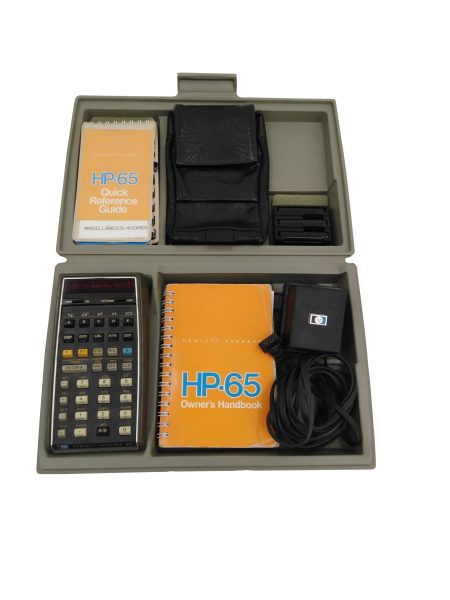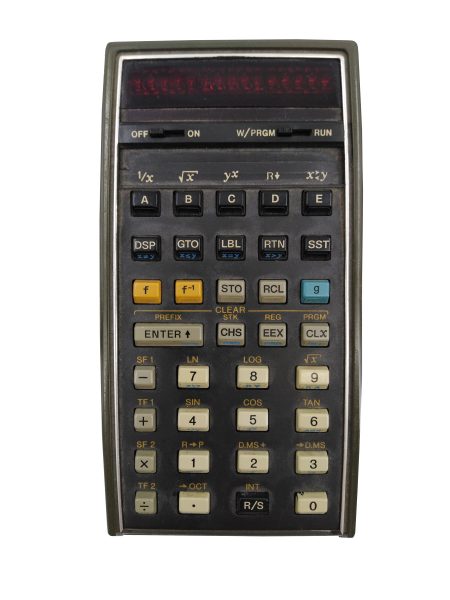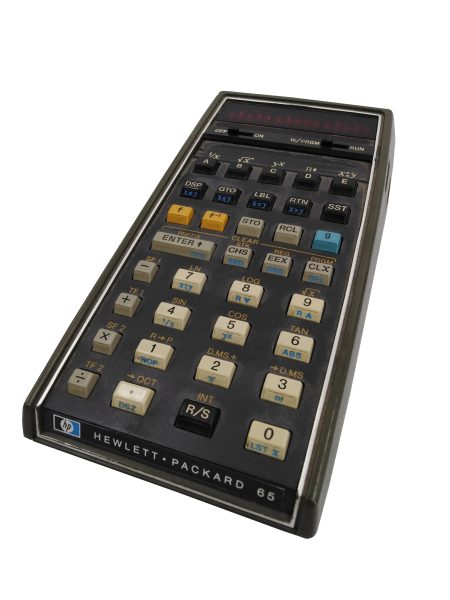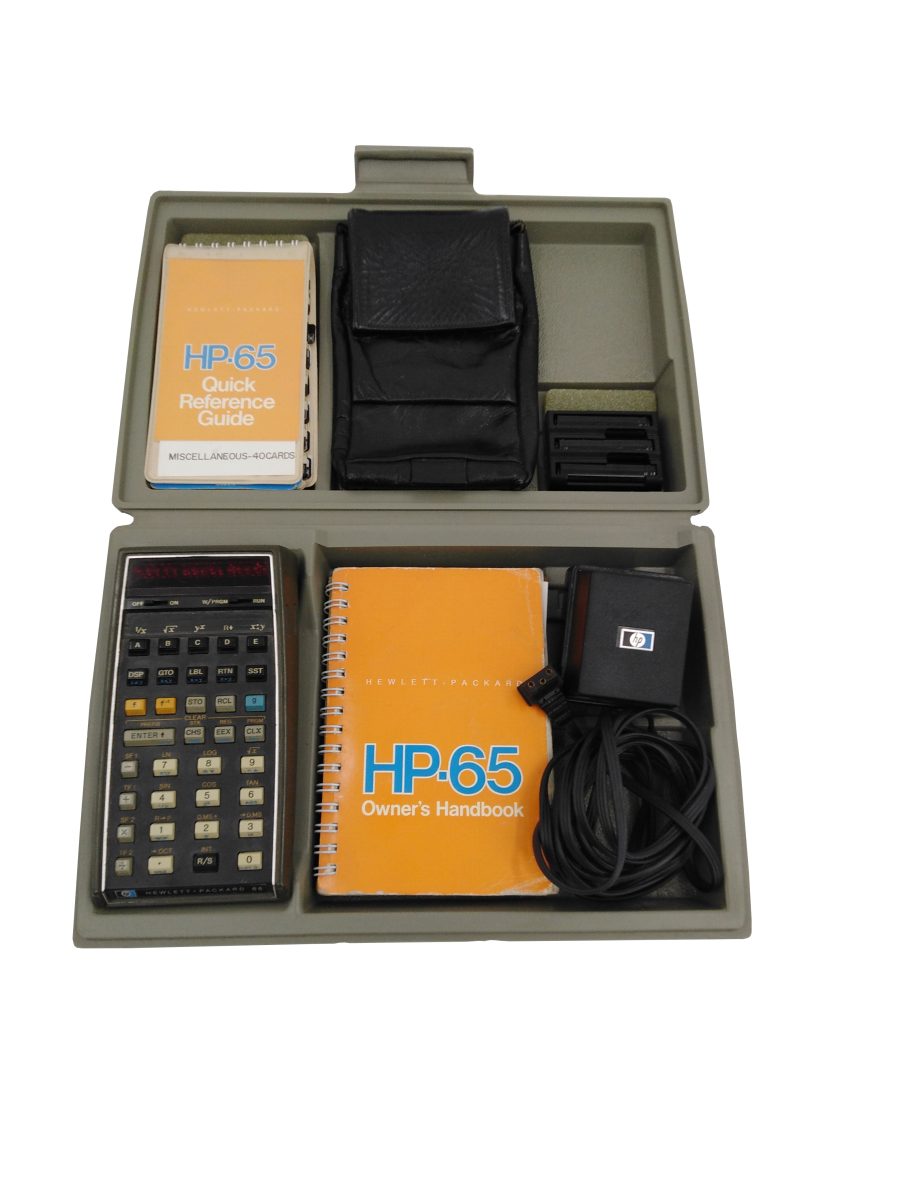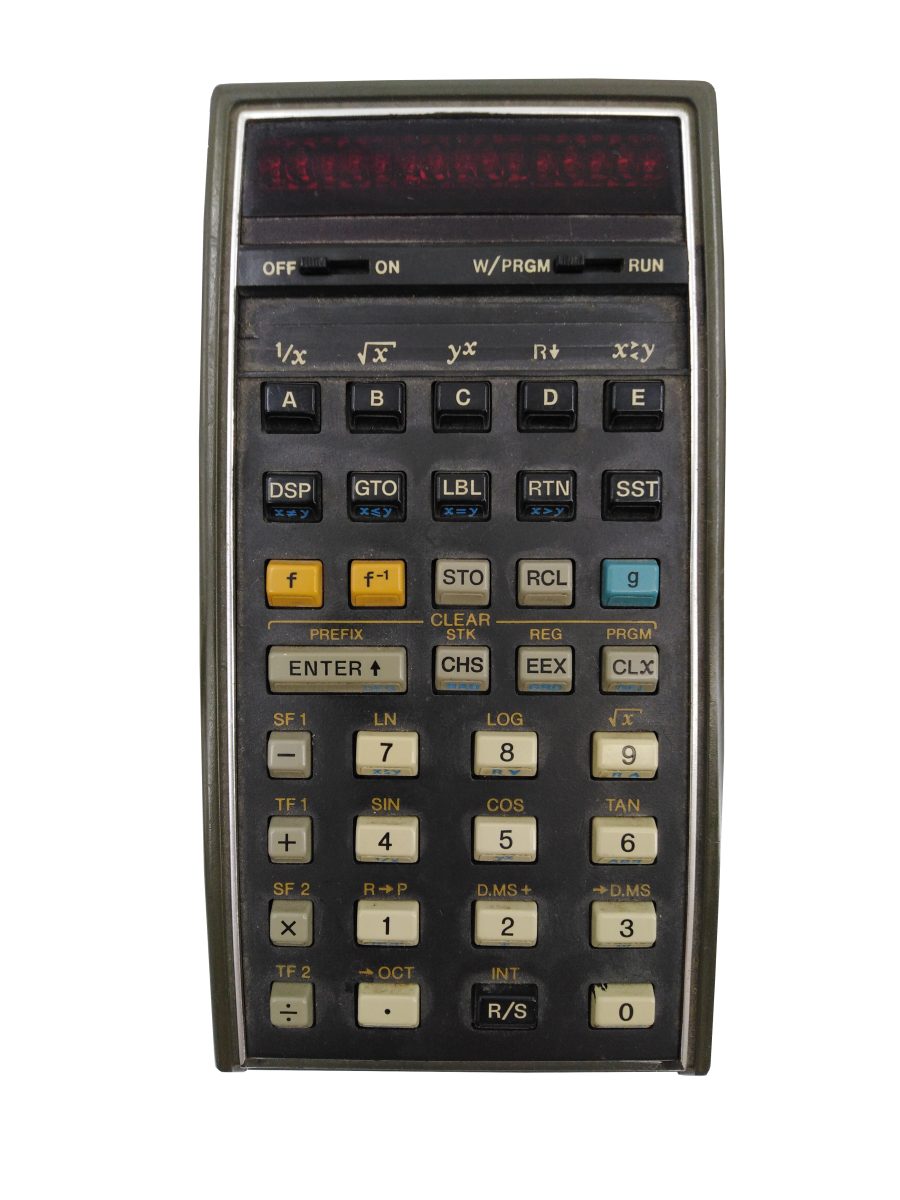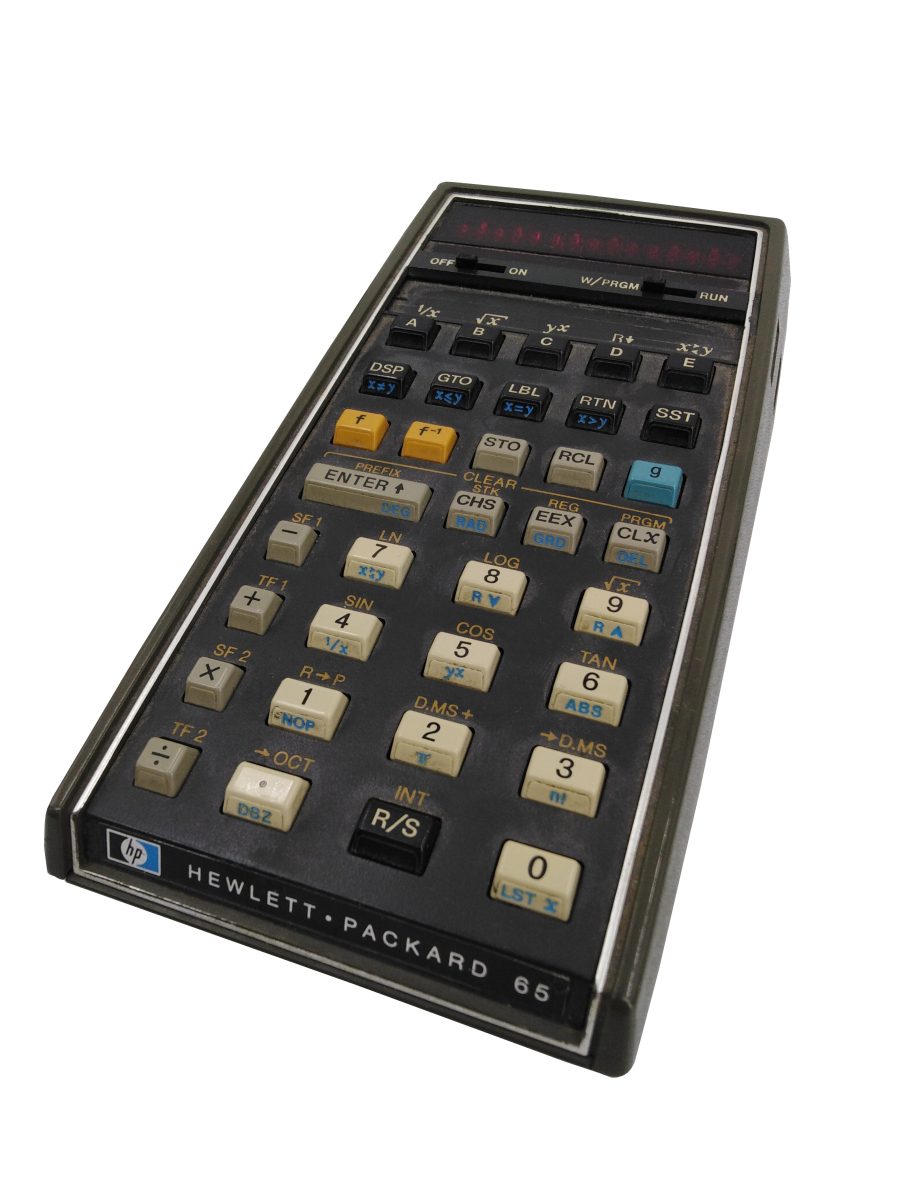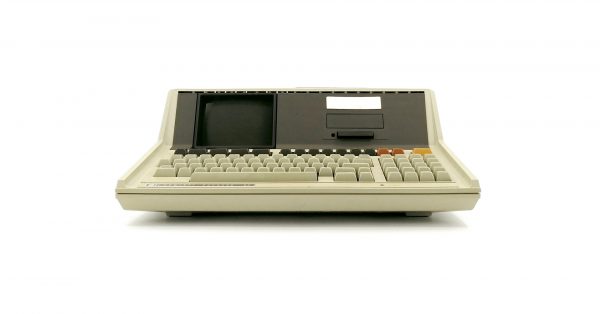Hewlett‑Packard 65 Calculator HP‑65
Introduced in 1974, the HP-65 is the first programmable calculator. The programs could be saved and written to 'magnet strips'.
Hewlett‑Packard 65 Calculator HP‑65
Introduced in 1974, the HP-65 is the first programmable calculator. The programs could be saved and written to 'magnet strips'.
One of the requirements for the calculator's design was that it fit in a shirt pocket. This is the reason for the dimensions and the tapered shape.
Most keys had up to 4 different functions. The HP-65 had memory for up to 100 different instructions of 6 bits each. The programs could be stored on a magnetic polyster strip.
The HP-65 was the first calculator in space during an Apollo test project. The calculator was used to verify the output of the onboard 'Apollo guidance computer'. This served to calculate the maneuvers for docking to the Soyuz capsule.
Mitchell Feigenbaum may have used this calculator to determine the so-called 'Feigenbaum constant'.




